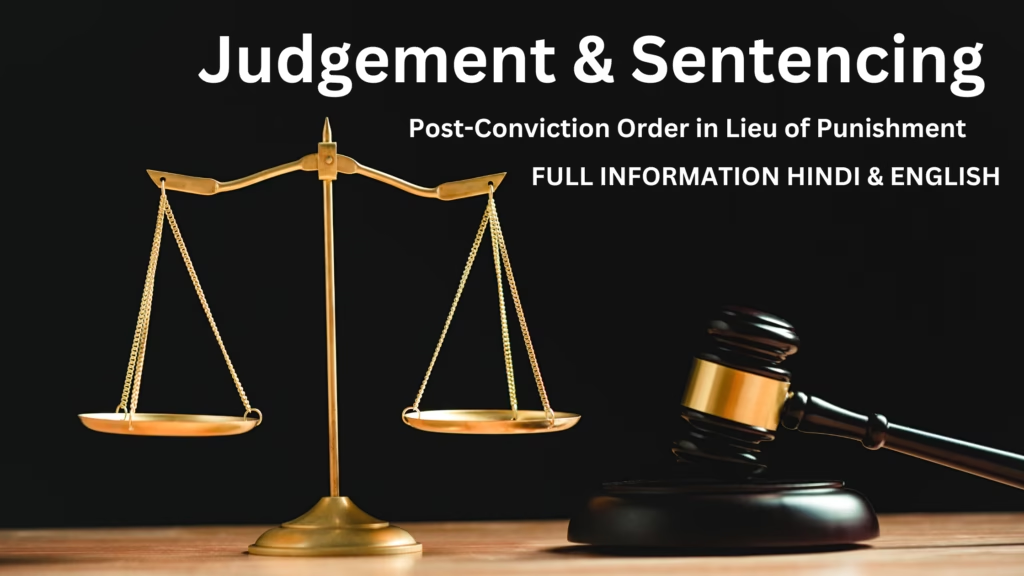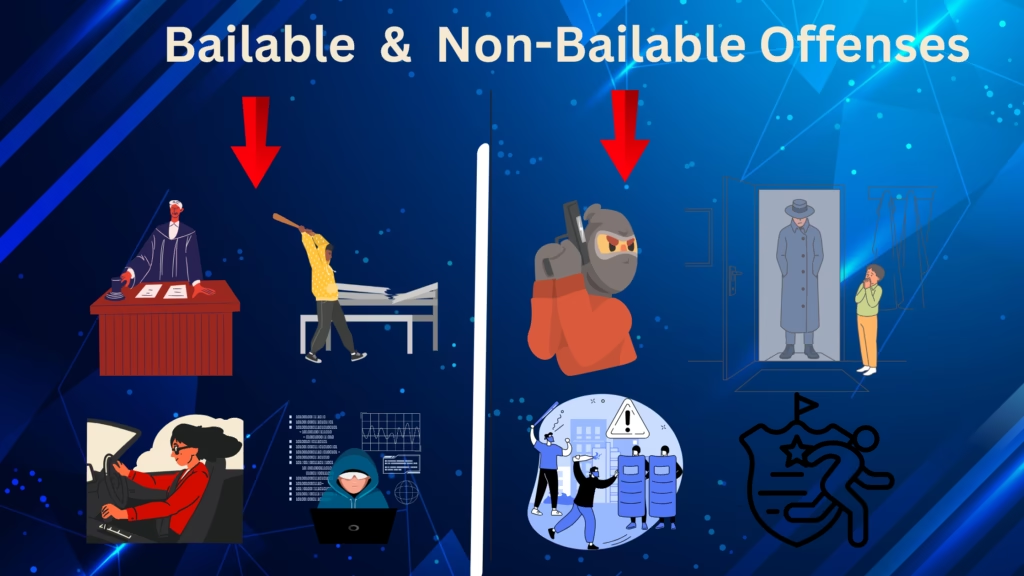बीमा कानून (Insurance Law) विभिन्न कानूनी सिद्धांतों पर आधारित है, जो बीमा अनुबंधों को नियंत्रित करते हैं और बीमाधारकों के अधिकारों एवं कर्तव्यों को निर्धारित करते हैं।
🔹 1. बीमा अनुबंध (Contract of Insurance) और उसके प्रकार
➤ बीमा अनुबंध की परिभाषा (Definition of Insurance Contract)
बीमा अनुबंध एक कानूनी समझौता होता है जिसमें बीमाकर्ता (Insurer) किसी निश्चित प्रीमियम के बदले बीमाधारी (Insured) को किसी संभावित जोखिम या हानि से सुरक्षा प्रदान करता है।
➤ बीमा अनुबंध के प्रकार (Classification of Insurance Contracts)
- जीवन बीमा (Life Insurance) – बीमाधारी की मृत्यु होने पर उसके नामांकित व्यक्ति को वित्तीय सुरक्षा मिलती है।
- सामान्य बीमा (General Insurance) – इसमें स्वास्थ्य, वाहन, अग्नि, समुद्री और संपत्ति बीमा शामिल हैं।
- पुनर्बीमा (Reinsurance) – बीमाकर्ता अपने जोखिम को किसी अन्य बीमा कंपनी को हस्तांतरित कर सकता है।
➤ बीमा अनुबंध की प्रकृति (Nature of Insurance Contracts)
- एकपक्षीय अनुबंध (Unilateral Contract) – केवल बीमाकर्ता भुगतान करने के लिए बाध्य होता है।
- आकस्मिक अनुबंध (Aleatory Contract) – बीमा दावा भविष्य की अनिश्चित घटनाओं पर निर्भर करता है।
- शर्तीय अनुबंध (Conditional Contract) – पॉलिसीधारक को अनुबंध की शर्तों का पालन करना आवश्यक होता है।
🔹 2. सर्वोच्च सद्भावना का सिद्धांत (Principle of Good Faith), गैर-प्रकटीकरण (Non-Disclosure) और मिथ्या प्रस्तुतीकरण (Misrepresentation)
➤ सर्वोच्च सद्भावना (Utmost Good Faith)
बीमा अनुबंध में दोनों पक्षों को सभी महत्वपूर्ण तथ्यों को स्पष्ट रूप से बताना आवश्यक होता है।
➤ गैर-प्रकटीकरण (Non-Disclosure)
- यदि बीमाधारी कोई महत्वपूर्ण जानकारी छुपाता है, तो पॉलिसी को रद्द किया जा सकता है।
➤ मिथ्या प्रस्तुतीकरण (Misrepresentation)
- यदि बीमाधारी गलत या भ्रामक जानकारी प्रदान करता है, तो उसका दावा अस्वीकार किया जा सकता है।

🔹 3. बीमाकीय हित (Insurable Interest)
- बीमाधारी को बीमित वस्तु या व्यक्ति में आर्थिक हित होना चाहिए।
- उदाहरण: जीवन बीमा में केवल वे लोग बीमा करा सकते हैं जो किसी व्यक्ति पर निर्भर हैं।
🔹 4. जोखिम (The Risk)
- बीमा अनुबंध में “जोखिम” वह घटना होती है जो बीमित हानि का कारण बन सकती है।
- बीमाकर्ता केवल उन जोखिमों को कवर करता है जो पॉलिसी में उल्लिखित होते हैं।
🔹 5. बीमा पॉलिसी (The Policy) – वर्गीकरण, स्वरूप और सामग्री
➤ बीमा पॉलिसियों का वर्गीकरण (Classification of Policies)
- अवधि पॉलिसी (Term Policy) – एक निश्चित अवधि के लिए सुरक्षा प्रदान करती है।
- पूरी जीवन पॉलिसी (Whole Life Policy) – जीवन भर कवरेज प्रदान करती है।
- निधि पॉलिसी (Endowment Policy) – बीमा और निवेश का मिश्रण होती है।
➤ बीमा पॉलिसी की सामग्री (Form & Content of Insurance Policy)
- पॉलिसी नंबर और जारी करने की तिथि
- बीमाकर्ता और बीमित व्यक्ति का नाम
- कवरेज और बहिष्करण (Exclusions)
- प्रीमियम राशि और भुगतान शर्तें
- पॉलिसी की अवधि और नवीनीकरण प्रक्रिया

🔹 6. बीमा पॉलिसी की शर्तें (Conditions of the Policy)
- बीमाधारी को पॉलिसी में उल्लिखित सभी शर्तों को पूरा करना आवश्यक होता है।
- यदि कोई शर्त पूरी नहीं होती है, तो दावा अस्वीकृत किया जा सकता है।
🔹 7. जोखिम का परिवर्तन (Alteration of the Risk)
- यदि पॉलिसी अवधि के दौरान बीमित संपत्ति या व्यक्ति से संबंधित जोखिम में कोई बड़ा परिवर्तन होता है, तो बीमाकर्ता को सूचित करना आवश्यक होता है।
- यदि परिवर्तन महत्वपूर्ण हो तो बीमा प्रीमियम बढ़ सकता है या बीमा रद्द भी किया जा सकता है।
🔹 8. विषय वस्तु का हस्तांतरण (Assignment of the Subject Matter)
- जीवन बीमा में, पॉलिसीधारक अपने अधिकारों को किसी अन्य व्यक्ति को सौंप सकता है।
- संपत्ति बीमा में, स्थानांतरण के लिए बीमाकर्ता की सहमति आवश्यक होती है।
🔹 संक्षिप्त और विस्तृत विवरण (Short & Long Summary in English & Hindi)
| विषय | संक्षिप्त विवरण (Short Summary) | विस्तृत विवरण (Long Summary) |
|---|---|---|
| बीमा अनुबंध (Insurance Contract) | बीमा एक कानूनी समझौता है जो वित्तीय सुरक्षा प्रदान करता है। | बीमा अनुबंध में बीमाकर्ता, बीमित व्यक्ति और लाभार्थी शामिल होते हैं। इसमें विभिन्न प्रकार के बीमा होते हैं, जैसे जीवन बीमा और सामान्य बीमा। |
| सर्वोच्च सद्भावना (Good Faith) | दोनों पक्षों को सभी महत्वपूर्ण जानकारी देनी चाहिए। | यदि बीमाधारी कोई महत्वपूर्ण जानकारी छुपाता है, तो बीमा कंपनी दावा अस्वीकार कर सकती है। |
| बीमाकीय हित (Insurable Interest) | बीमाधारी को बीमित वस्तु या व्यक्ति में वित्तीय हित होना चाहिए। | यदि बीमित वस्तु का नुकसान बीमाधारी को आर्थिक रूप से प्रभावित नहीं करता है, तो बीमा अनुबंध वैध नहीं होगा। |
| जोखिम (Risk) | बीमा पॉलिसी में उल्लिखित जोखिमों को ही कवर किया जाता है। | यदि कोई अप्रत्याशित घटना होती है और वह बीमा पॉलिसी में शामिल है, तो बीमाकर्ता दावे का भुगतान करेगा। |
| बीमा पॉलिसी (Insurance Policy) | बीमा पॉलिसी एक लिखित दस्तावेज होता है जिसमें बीमा अनुबंध की शर्तें होती हैं। | इसमें कवरेज, बहिष्करण, प्रीमियम, दावा प्रक्रिया, और नवीनीकरण की जानकारी होती है। |
| जोखिम का परिवर्तन (Alteration of Risk) | यदि जोखिम में परिवर्तन होता है, तो बीमाकर्ता को सूचित करना आवश्यक होता है। | यदि बीमाधारी जोखिम में हुए परिवर्तन की सूचना नहीं देता है, तो पॉलिसी रद्द की जा सकती है। |
| विषय वस्तु का हस्तांतरण (Assignment of Subject Matter) | जीवन बीमा पॉलिसी को हस्तांतरित किया जा सकता है। | संपत्ति बीमा को स्थानांतरित करने के लिए बीमाकर्ता की अनुमति आवश्यक होती है। |
🔹 निष्कर्ष (Conclusion)
बीमा कानून पारदर्शिता, निष्पक्षता और कानूनी दायित्वों द्वारा नियंत्रित होता है। एक सफल बीमा अनुबंध के लिए बीमाधारी और बीमाकर्ता दोनों को अनुबंध की शर्तों का पालन करना आवश्यक होता है।
General Principles of Insurance Law
Insurance law is based on various legal principles that regulate insurance contracts and define the rights and duties of policyholders and insurers.
🔹 1. Insurance Contract and Its Types
➤ Definition of an Insurance Contract
An insurance contract is a legal agreement in which the insurer provides financial protection to the insured against potential risks or losses in exchange for a premium.
➤ Types of Insurance Contracts
- Life Insurance – Provides financial benefits to the nominee upon the policyholder’s death.
- General Insurance – Includes non-life insurance such as health, motor, fire, marine, and property insurance.
- Reinsurance – Insurers transfer part of their risk to other insurance companies.
➤ Nature of Insurance Contracts
- Unilateral Contract – Only the insurer is legally bound to fulfill the promise.
- Aleatory Contract – The benefits depend on uncertain future events.
- Conditional Contract – The insured must comply with policy terms to receive benefits.
🔹 2. Principle of Utmost Good Faith, Non-Disclosure & Misrepresentation
➤ Utmost Good Faith
Both parties must disclose all material facts related to the insurance contract.
➤ Non-Disclosure
- If the insured hides crucial information, the insurer can cancel the policy.
➤ Misrepresentation
- Providing false or misleading information may result in the rejection of claims.
🔹 3. Insurable Interest
- The insured must have a financial stake in the insured subject or person.
- Example: Parents can insure their children’s lives, but not a stranger’s.

🔹 4. Risk in Insurance
- In an insurance contract, risk refers to the uncertainty of financial loss covered by the policy.
- The insurer covers only the risks specified in the policy.
🔹 5. Insurance Policy – Types, Form, and Contents
➤ Types of Insurance Policies
- Term Policy – Provides coverage for a fixed period.
- Whole Life Policy – Provides lifelong coverage.
- Endowment Policy – Offers both insurance coverage and investment benefits.
➤ Contents of an Insurance Policy
- Policy Number & Issuing Date
- Names of Insurer & Insured
- Scope of Coverage & Exclusions
- Premium Amount & Payment Terms
- Policy Term & Renewal Conditions
🔹 6. Conditions of an Insurance Policy
- The insured must fulfill all policy conditions to be eligible for claims.
- Failure to comply may result in claim rejection.
🔹 7. Alteration of Risk
- If the risk associated with the insured subject changes during the policy period, the insurer must be notified.
- Significant changes can lead to higher premiums or policy cancellation.

🔹 8. Assignment of the Subject Matter
- Life insurance policies can be transferred to another person.
- Property insurance requires insurer approval for assignment.
🔹 Short & Long Summary (English & Hindi Comparison)
| Topic | Short Summary | Detailed Summary |
|---|---|---|
| Insurance Contract | Insurance is a legal agreement that provides financial security. | The contract involves an insurer, insured, and nominee. It includes different types of insurance, such as life and general insurance. |
| Utmost Good Faith | Both parties must disclose important information. | If the insured conceals crucial facts, the insurer may reject the claim. |
| Insurable Interest | The insured must have a financial interest in the insured object/person. | If the insured object’s loss does not financially affect the policyholder, the contract is invalid. |
| Risk in Insurance | The policy covers only specified risks. | If an unforeseen event occurs and is covered by the policy, the insurer will compensate. |
| Insurance Policy | A written document stating insurance contract terms. | It includes coverage, exclusions, premium, claims process, and renewal details. |
| Alteration of Risk | The insured must inform the insurer of any risk changes. | If changes are not disclosed, the insurer may cancel the policy. |
| Assignment of Subject Matter | Life insurance policies can be transferred. | Property insurance requires insurer approval before assignment. |

🔹 Conclusion
Insurance law is based on transparency, fairness, and legal obligations. Both the insurer and the insured must adhere to the contract terms to ensure smooth claim processing.
📚 References & Key Texts on Insurance Law (बीमा कानून पर संदर्भ और प्रमुख पुस्तकें)
For a detailed study on insurance law, the following books and references provide comprehensive legal insights on various aspects of insurance policies, principles, and case laws.
बीमा कानून का गहराई से अध्ययन करने के लिए, निम्नलिखित पुस्तकें और संदर्भ बीमा नीतियों, सिद्धांतों और मामलों पर व्यापक कानूनी जानकारी प्रदान करते हैं।
🔹 1. Singh Bridge Anand – New Insurance Law (2000) (बीमा कानून – 2000)
📖 Publisher (प्रकाशक): Union Book Publishers, Allahabad
📌 Summary (सारांश):
- This book provides a detailed analysis of modern insurance laws in India, covering life, health, and general insurance regulations.
- It discusses case laws, policyholder rights, and insurer obligations under Indian law.
- A great reference for students, lawyers, and policymakers interested in insurance law reforms.
🔹 यह पुस्तक भारत में आधुनिक बीमा कानूनों का विस्तृत विश्लेषण प्रदान करती है, जिसमें जीवन, स्वास्थ्य और सामान्य बीमा नियम शामिल हैं।
🔹 2. Ivamy – Case Book on Insurance Law (1984) (बीमा कानून पर केसबुक – 1984)
📖 Publisher (प्रकाशक): Butterworths
📌 Summary (सारांश):
- This book is a case law compilation, providing landmark judgments on insurance contracts.
- Covers key insurance disputes, legal precedents, and their judicial interpretations.
- Helps in understanding real-world applications of insurance laws in various countries.
🔹 यह पुस्तक बीमा अनुबंधों पर प्रमुख मामलों का संकलन करती है, जिसमें कानूनी विवादों और उनके न्यायिक व्याख्याओं को शामिल किया गया है।
🔹 3. Ivamy – General Principles of Insurance Laws (1993) (बीमा कानूनों के सामान्य सिद्धांत – 1993)
📖 Publisher (प्रकाशक): Butterworths
📌 Summary (सारांश):
- Discusses core insurance principles like utmost good faith, insurable interest, indemnity, subrogation, and contribution.
- Covers different types of insurance contracts and their legal enforceability.
- Useful for law students, insurance professionals, and policy analysts.
🔹 यह पुस्तक बीमा कानूनों के मूलभूत सिद्धांतों को कवर करती है और विभिन्न प्रकार के बीमा अनुबंधों की कानूनी वैधता पर प्रकाश डालती है।
🔹 4. John Birds – Modern Insurance Law (1988) (आधुनिक बीमा कानून – 1988)
📖 Publisher (प्रकाशक): Sweet & Maxwell
📌 Summary (सारांश):
- This book covers the evolution of insurance laws, modern regulatory frameworks, and global insurance practices.
- Discusses how technological advancements and globalization have influenced insurance laws.
- Includes comparative analysis of insurance laws in India, the UK, and other jurisdictions.
🔹 यह पुस्तक बीमा कानूनों के विकास, आधुनिक नियामक ढांचों और वैश्विक बीमा प्रथाओं को शामिल करती है।
🔹 5. Sreenivasan M.N – Principles of Insurance Law (1997) (बीमा कानून के सिद्धांत – 1997)
📖 Publisher (प्रकाशक): (Not specified)
📌 Summary (सारांश):
- A detailed academic and practical guide on insurance laws in India.
- Covers life insurance, marine insurance, fire insurance, and liability insurance.
- Useful for lawyers, students, and policymakers dealing with insurance claims and regulations.
🔹 यह पुस्तक भारत में बीमा कानूनों पर विस्तृत शैक्षणिक और व्यावहारिक मार्गदर्शन प्रदान करती है।
📌 Conclusion (निष्कर्ष)
These books provide in-depth knowledge on insurance laws and are useful for lawyers, insurance professionals, and students. They cover key principles, case laws, and regulatory aspects of insurance.
ये पुस्तकें बीमा कानूनों पर गहन ज्ञान प्रदान करती हैं और वकीलों, बीमा पेशेवरों और छात्रों के लिए उपयोगी हैं।
💡 Would you like a more detailed discussion on any of these references? 😊
क्या आप इनमें से किसी संदर्भ पर विस्तृत चर्चा चाहते हैं? 😊

